Top 10 spirits brands on social media
The social media scene has been difficult in recent months, but brands that have done it best have been consistent and targeted in their digital output.
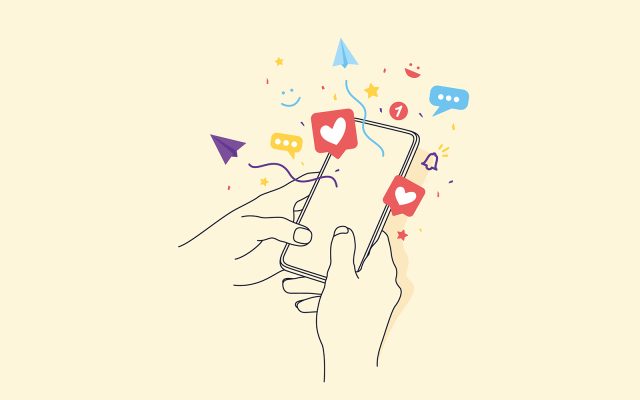
The world of social media rarely sits still, but last year changes were monumental – with even more on the horizon. Most notable was the renaming of Twitter to X – or, as most outlets now refer to it, ‘X, formerly Twitter’ – and a whole host of changes to the platform’s functionality following its takeover by Elon Musk.
First, Musk announced that verified accounts would be available only to those who paid for a Twitter Blue subscription – although a separate verification checkmark was created for non-paying users, which was then removed, then re-added, before being removed again in April 2023 (although some users still claim to have one without paying). Other functionality changes have meant management platforms such as Hootsuite have struggled to keep up, making life even harder for brands and social media managers.
Tom Khan-Lavin, co-founder of spirits marketing agency YesMore, thinks the constant changes make the platform increasingly difficult for brands to tap into: “A huge proportion of its former and current users don’t know how to reference it,” he says. “Take this confusion into the boardroom or marketing-strategy meeting and no one knows where they stand with it.
“Add in the volatility of X’s owner, Elon Musk, and it’s easy to agree that X may not be the platform a brand wants to invest marketing budget into.”
The theory plays out in practice – of the 30 most successful spirits brands on social media, only 14 had posted on X in 2024, with most of these simply reposting content designed for other platforms.
Clock ticks for TikTok
Another platform that seems to be less of a priority for spirits brands is TikTok. Promoting alcohol on the platform is against its terms of service – “Any brands who know that but still use TikTok should be prepared for the day they lose their accounts,” says Khan-Lavin. None of the brands The Spirits Business surveyed had an official TikTok account, although a few seemed to have unverified accounts with no posts, perhaps indicating they are prepared for a day when alcohol marketing is permitted.
“The drinks brands that jumped on TikTok in spite of their rules – or naively without knowing about them – have had mixed successes with the platform,” continues Khan-Lavin. “It’s true that your content can go viral on TikTok, but not without both effort and the cultural understanding to ‘get’ the tone and nuances of the platform and its passing trends.
“So many brands join TikTok in search of virality, but the reality is most of those drinks brands have underestimated how content hungry the platform is – and tonally how different the content needs to be from their brand guidelines.”
Rare and exclusive
Although alcohol can’t be promoted on the platform, users can still post about their favourite brands, with nearly 200,000 videos under #jackdaniels, for instance. A super-fan of the brand also has his own account – @jackdanielslibrary – where he shares videos of his 300-plus-strong collection of rare and exclusive bottles.
Any hopes for spirits brands being able to market on TikTok could well be dashed by the US government’s plans to ban the platform. President Biden has signed the ban into law, however many factors could stop it coming into force – such as a sale of the platform to a non-Chinese buyer, or the presidential election this year could see Biden replaced.
“While a US ban would be devastating for TikTok itself, most consumers (and brands) are fickle. It will serve as a frustration to them while they migrate to another platform – most likely Instagram or Snap, but hopefully something completely new,” predicts Khan-Lavin.
Strong strategy
So – no Twitter, no X, no TikTok. What’s left for spirits brands? Facebook, Instagram, Pinterest, and YouTube are all options to consider but Khan-Lavin advises against going for them all: “Too many drinks brands launch on all platforms then run out of steam (budget, resource, ideas) too quickly to do any of them well. Fewer platforms is more when it comes to social media. Do one or two well, rather than spreading yourself too thin.
“I’d recommend starting with a strong strategy and creative plan first and foremost – either developed by an expert that knows social media inside out, or at the very least by thinking through everything thoroughly first.”
Of the 30 accounts surveyed, the average number of posts on Instagram was around 12 per month – that’s nearly one every other day. The most successful accounts posted at least this many times. The average number of posts on Facebook was lower, at six per month. While social media marketing is more about quality than quantity – as our 2024 Social Media Hero demonstrates – being consistent and appearing in feeds is vital.
The following Social Media Heroes list has been compiled as part of The Spirits Business’s Brand Champions 2024 report. As such, it includes only brands that sell more than one million nine-litre cases annually.
These figures are based on research conducted between March and May 2024, and so the majority of brands included have most likely grown their followers and fans since.
10. Patrón
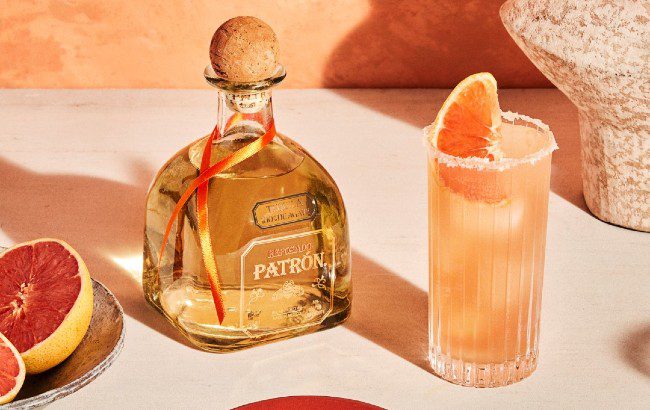
Facebook fans: 4,110,460 | Twitter/X followers: 206,773 | Instagram followers: 391,863 | Total: 4,709,096
Frequency 7 | Engagement 6 | Consistency 8 | Creativity 6 | Overall Score 27
Unlike many of the other spirits brands surveyed, Tequila brand Patrón posts consistently on all three platforms, garnering a whopping 4.7 million followers in total.
Its posts are very product-driven, with around two-thirds of all content being bottle shots – albeit very beautiful ones with a consistent aesthetic. Its collaboration with the F1 offers some interesting Reel content outside of the world of Tequila.
While the brand shared plenty of cocktail inspiration, many were posted without a recipe or without instructions in the caption, making it quite difficult for users to follow along.
9. Jack Daniel’s
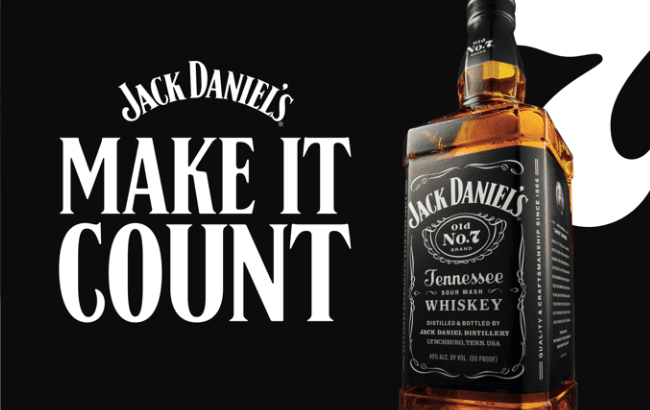
Facebook fans: 17,904,202 | Twitter/X followers: 195,512 | Instagram followers: 688,407 | Total: 18,788,121
Frequency 5.5 | Engagement 7 | Consistency 9 | Creativity 6 | Overall Score 27.5
Brown-Forman-owned Jack Daniel’s has the highest number of total fans and followers of every spirits brand surveyed, the vast majority of whom come from its Facebook page. Like many brands, it stopped posting on Twitter last year.
The brand has a wide range of accounts for different regions and tailors its content for its different audiences. Although its Facebook and Instagram accounts post mainly the same things, its content is a good mix of videos vs pictures and while it features a reasonable number of bottle shots, it manages to avoid feeling too product-heavy.
It uses video to post recipes in an innovative format that keeps content on brand at all times, and has managed to diversify the people featured in its posts since last year.
8. Grey Goose
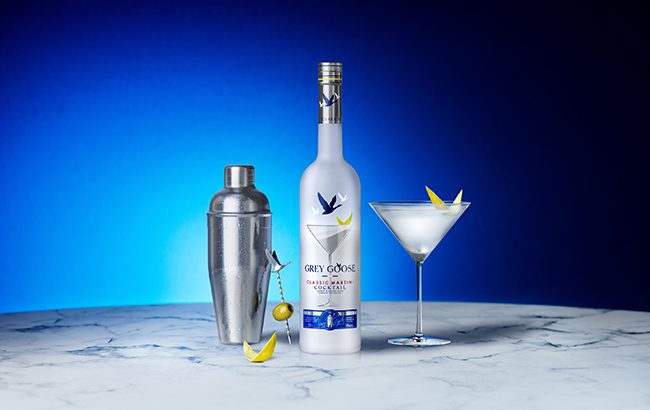
Facebook fans: 2,392,600 | Twitter/X followers: 85,232 | Instagram followers: 387,280 | Total: 2,865,112
Frequency 3 | Engagement 9 | Consistency 9 | Creativity 7 | Overall Score 28
Grey Goose has managed to reflect its super-premium positioning through its social media accounts, with consistency across all three platforms and in its photography.
On Instagram, Grey Goose partners with influencers in the luxury space, which adds diversity to its feed while also extending its reach. The content created by these influencers has high production value, suggesting the brand has assisted with its creation or chosen very wisely.
Where the brand falls down is in frequency – it posted only eight times in the two months surveyed, making it the least prolific poster in this top 10.
7. Jameson
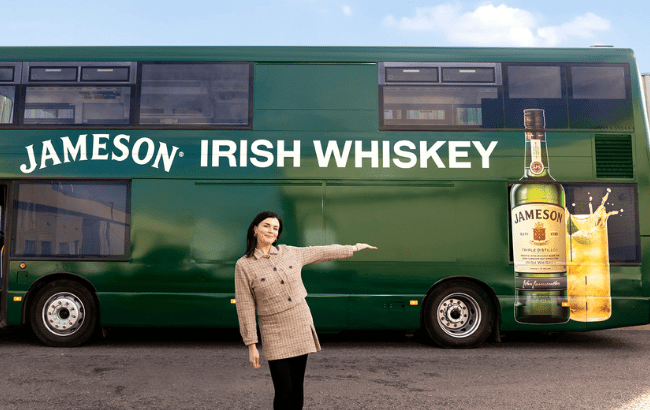
Facebook fans: 3,913,622 | Twitter/X followers: 43,605 | Instagram followers: 228,246 | Total: 4,185,473
Frequency 6 | Engagement 6.5 | Consistency 9 | Creativity 7.5 | Overall Score 29
Jameson posted consistently across all of its platforms, although not particularly often, and it also tailored its content to its US, UK and Irish audiences. One of the brand’s strengths is its sense of humour and ability to jump onto memes, which is a key asset on Twitter – and where most brands have opted to stop posting.
Jameson interacts with its followers by replying to comments and works with influencers on occasion, as well as sharing recipes and product updates. Its grid is distinctively green, creating brand consistency without constantly posting logos and bottles.
6. Hendrick’s
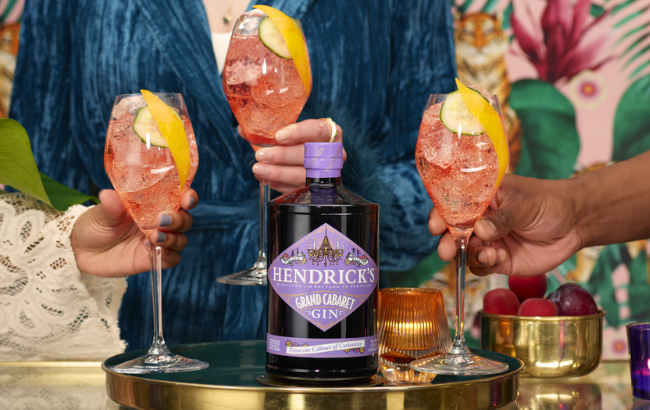
Facebook fans: 920,459 | Twitter/X followers: 50,168 | Instagram followers: 342,577 | Total: 1,313,204
Frequency 7.5 | Engagement 5.5 | Consistency 8 | Creativity 9 | Overall Score 30
Hendrick’s is another brand that has turned its back on Twitter this year, but its output on Facebook and Instagram more than makes up for it. Its imagery is consistent with the brand, but it has created a refreshingly funny voice for its posts. It picks up on memes and engages its audience in innovative ways, such as posting a ‘two truths and a lie’ game about cucumbers, encouraging people to comment – plus, the brand account always replies.
5. Don Julio
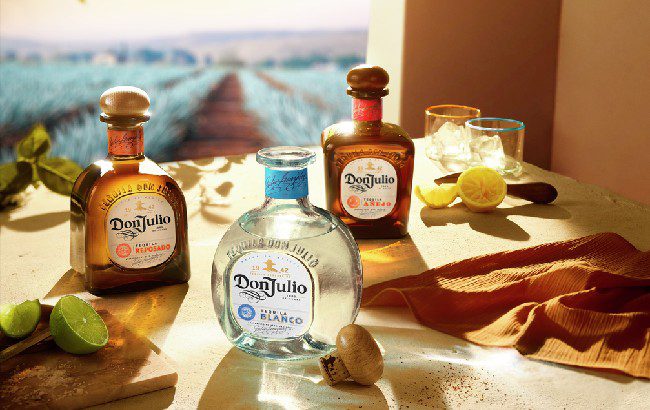
Facebook fans: 1,880,436 | Twitter/X followers: 39,545 | Instagram followers: 358,490 | Total: 2,278,471
Frequency 7.5 | Engagement 7 | Consistency 9 | Creativity 7.5 | Overall Score 31
As with many of Diageo’s brand Twitter accounts, Don Julio has made its profile private, with only select followers allowed to see its posts. Unfortunately The Spirits Business’ request is still pending after three months, leaving the brand’s Twitter content a mystery to us (and we imagine to many others).
Don Julio’s Instagram and Facebook feeds are almost identical, but its photography is strong and in keeping with the brand’s premium positioning. There’s a good diversity of content, with enough product shots to keep the brand front of mind. Its Barbie-themed bottle for its Rosado expression was a particular highlight – though we’d have loved to seen more than one post about it.
4. Bacardí
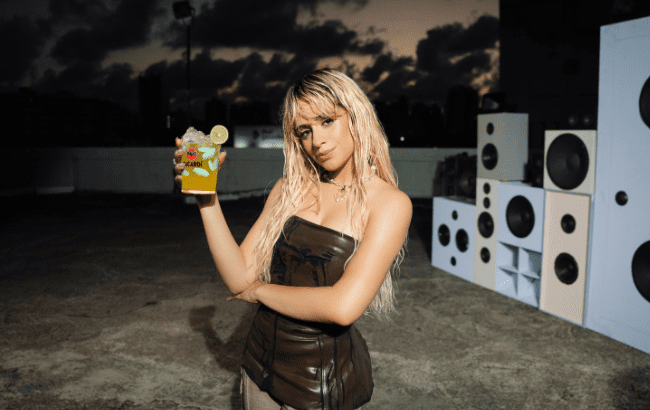
Facebook fans: 9,356,750 | Twitter/X followers: 97,934 | Instagram followers: 265,648 | Total: 9,720,332
Frequency 6.5 | Engagement 7.5 | Consistency 10 | Creativity 7 | Overall Score 31
Collaboration has been big for Bacardí this year, with the brand posting content featuring Cuban singer Camila Cabello, American record producer Boi1da and Chinese singer and dancer Xin Liu. Such a wide range of ambassadors allows the brand to break through to different audiences with different interests in different regions.
There’s consistency across all three platforms, and across its photography – the result is a range of vibrant images that evoke Bacardí’s Caribbean heritage while always keeping the brand front of mind.
3. Baileys
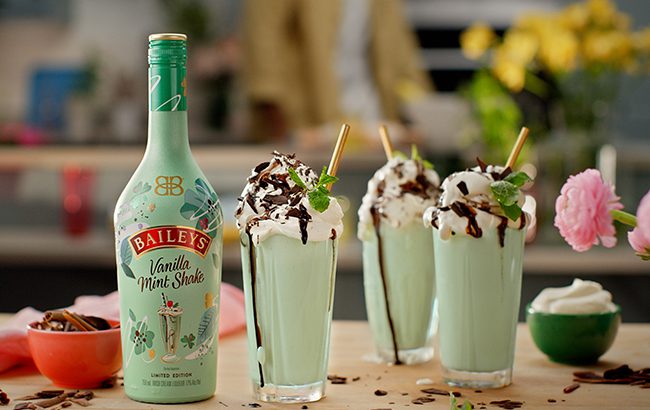
Facebook fans: 4,533,445 | Twitter/X followers: 9,894 | Instagram followers: 222,274 | Total: 4,765,613
Frequency 5 | Engagement 8.5 | Consistency 8.5 | Creativity 9.5 | Overall Score 31.5
Last year’s Social Media Brand Champion might not have taken the win for a second time, but it certainly didn’t fall behind. Its collaboration with Conchita Wurst throughout the Eurovision Song Contest tied the brand to a timely event that had the whole world watching
Its decision to provide video and audio descriptions on all of its posts for the visually impaired was a great way to be more inclusive. Similarly, the brand posts full recipes as text in the captions, make it easy for anyone to follow along.
The only criticism is that Baileys posts significantly less frequently than other brands in the top 10 – but great content does take time.
2. Jägermeister
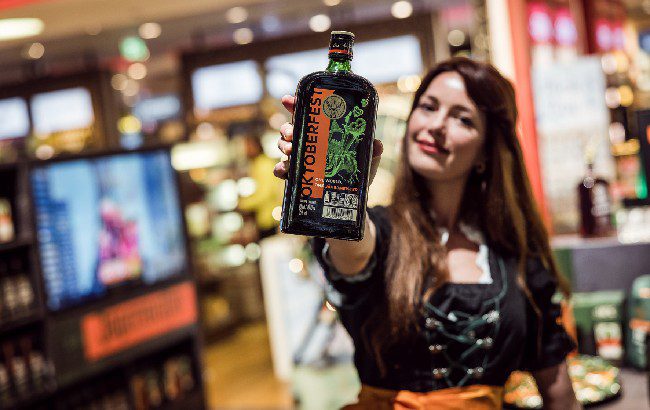
Facebook fans: 6,106,640 | Twitter/X followers: 114,464 | Instagram followers: 441,089 | Total: 6,662,193
Frequency 8 | Engagement 5.5 | Consistency 9 | Creativity 10 | Overall Score 32.5
Close to the number-one spot was liqueur brand Jägermeister. The brand posted on all three platforms and really tailored its content to each. On Twitter, it showed a great sense of humour and engaged its audience through polls and memes.
On Instagram, it posted a range of behind-the-scenes content and brand history that helped to educate its audience on its product without a hard sell. Plus, it spotlighted artists, bars and more to create great content that didn’t feature its product at all – demonstrating that social media works best when it’s not seen as a sales driver.
1. Hennessy
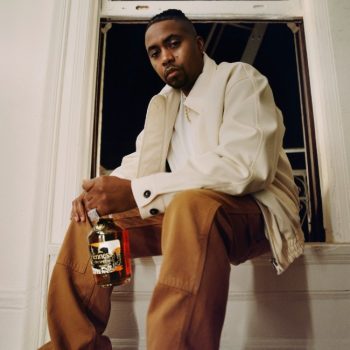
Facebook fans: 3,624,133 | Twitter/X followers: 77,395 | Instagram followers: 796,046 | Total: 4,497,574
Frequency 5.5 | Engagement 9.5 | Consistency 10 | Creativity 10 | Overall Score 35
While Hennessy’s posting frequency was almost perfectly average, the Cognac brand managed to stand out from its competitors through its strong and consistent aesthetic and a tailored approach to each platform. Unlike many, it uses Twitter, and tailors its approach to the platform, adopting a more humorous tone of voice, and engaging with other users.
On Instagram, it often posts in threes to maintain consistency across its grid, and even employs a template for its recipe posts that creates a premium feeling that matches its positioning.
While its consistency is a strong factor, Hennessy certainly doesn’t lack creativity. To market its Lunar New Year expression, it posted videos of CGI golden dragons circling its estate in Cognac, France, and the Eiffel Tower, and linked to an AR experience so that users could engage with the campaign for themselves. And these factors have paid off – Hennessy had the highest total engagement on its posts of all the brands reviewed.
Related news
Gossip Girl ‘spills the tea’ on Betty Booze RTDs
